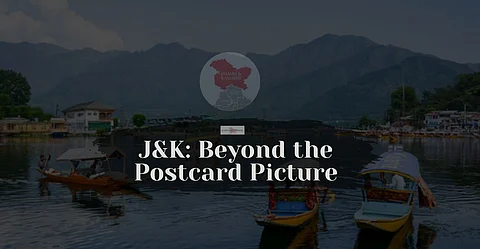

NEW DELHI: Sadia, 23, from Bihar, grew up on a diet of Bollywood and schoolbooks that painted Kashmir as “heaven on earth.”
“It was all snow, shikaras, and apple orchards,” she recalls. That changed when she went to Aligarh Muslim University and befriended Kashmiri students. Their conversations about everyday realities - curfews, internet shutdowns, added complexity to the postcard-perfect image she had held.
“They didn’t contradict what I believed — they added layers to it. I started to see how Kashmiris live under pressure, constantly negotiating beauty with fear.”
It wasn’t a single moment of change but a series of late-night conversations, cups of chai, that, she says, “made her rethink everything”.
In a diverse country like India, perception often fills the gaps left by distance. When it comes to Jammu & Kashmir, a place shaped as much by politics as by poetry, many Indians form an image, often without having ever set foot there.
In response to queries about their early perceptions and whether they changed about Kashmir, several youth the Kashmir Times spoke to offered varied responses.
But a pattern of transformed perceptions emerged, most of them revealing that a shift occurred after direct interaction with the people of the region.
Some were gradual awakenings, others abrupt reckonings. A few, however, remained conflicted.
As a child, Aditya, 23, born in Kerala and raised in Chhattisgarh, used a military lens to view Kashmir, a region where his grandparents had lived during army postings. As a child, he imagined it as a fairytale-like land of snow.
But as he grew up, new realities of chaos and violence emerged. He specifically remembers 2016 and the unfolding situation after the killing of Burhan Wani.
“I started reading about protests, pellet injuries, shutdowns. I realised this isn’t just a beautiful place — it’s a place where people are trapped in a never-ending tug-of-war.”
This realisation led him to seek out more voices from Kashmir — through news, books, independent journalism. “I started understanding that Kashmiris are caught between two forces. It’s not just a conflict zone - it’s a place where people are suffering, often invisibly. It made me more empathetic.”
For Ritesh, 28, from Maharashtra, a Marathi essay titled Kashmir Samjun Ghetana (Understanding Kashmir) became the turning point. “It introduced me to the actual lives of people there - their faiths, their fears, and their warmth.”
Nothing changed overnight. But the article, as he says, planted a seed. After moving to Delhi, he lived with a Sikh youth from Jammu and began to see Kashmir as not just one region, but many cultures woven together.
Many others, too, shared stories of transformation — or, in some cases, the absence of it. Khushi, from Odisha, visited Kashmir in 2023 and saw the “heaven” she had imagined as a child. But her sense of awe has since been clouded by fear following the recent Pahalgam attack.
For Pawan, the son of a CRPF soldier from Madhya Pradesh, the idea that Kashmir was hostile to outsiders shaped his early thoughts until a visit to Jammu and Katra in 2019 introduced him to the region’s warmth and hospitality.
Khahishpreet, from Punjab, once believed only Muslims lived in Kashmir, but through college and friendships, she discovered the diversity of the region — Hindus, Sikhs, and Rajputs, all part of a rich cultural fabric.
Johnson, from Tamil Nadu, grew up associating Kashmir primarily with violence, shaped by media portrayals. “Now I understand why they fight — it’s home,” he said, though fear, he admitted, still shapes his image.
No perceptible change
While for some stereotypes faded, fully or partially, for others the Kashmir in their minds remains unchanged.
Mai Dol Camadir from Arunachal Pradesh offered a blunt view that hadn’t evolved: “Muslims, pine trees, snow, stone pelting, and army.” That was his image since childhood. It remains the same.
Saket, 23, from Uttar Pradesh, once thought of Kashmir as a land of beauty — and terror. “We grew up hearing that Pandits were driven out, that people threw stones, attacked the army.”
After Article 370’s abrogation, he thinks the situation has improved. He saw more Kashmiris speaking about peace. “The Pahalgam attack happened, and Kashmiris themselves condemned it. It made me realise that maybe only a few people hold extremist views — not everyone.”
Neither Camadir or Saket, who view Kashmir from a distance, have had a personal contact from the region.
For several others the Kashmir Times spoke to, the turning point came not from headlines but from human interaction — a roommate, a friend, a visit, a conversation that revealed layers behind the labels.
Have you liked the news article?